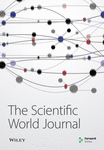A Novel Tool for High-Throughput Screening of Granulocyte-Specific Antibodies Using the Automated Flow Cytometric Granulocyte Immunofluorescence Test (Flow-GIFT)
Abstract
Transfusion-related acute lung injury (TRALI) is a severe complication related with blood transfusion. TRALI has usually been associated with antibodies against leukocytes. The flow cytometric granulocyte immunofluorescence test (Flow-GIFT) has been introduced for routine use when investigating patients and healthy blood donors. Here we describe a novel tool in the automation of the Flow-GIFT that enables a rapid screening of blood donations. We analyzed 440 sera from healthy female blood donors for the presence of granulocyte antibodies. As positive controls, 12 sera with known antibodies against anti-HNA-1a, -b, -2a; and -3a were additionally investigated. Whole-blood samples from HNA-typed donors were collected and the test cells isolated using cell sedimentation in a Ficoll density gradient. Subsequently, leukocytes were incubated with the respective serum and binding of antibodies was detected using FITC-conjugated antihuman antibody. 7-AAD was used to exclude dead cells. Pipetting steps were automated using the Biomek NXp Multichannel Automation Workstation. All samples were prepared in the 96-deep well plates and analyzed by flow cytometry. The standard granulocyte immunofluorescence test (GIFT) and granulocyte agglutination test (GAT) were also performed as reference methods. Sixteen sera were positive in the automated Flow-GIFT, while five of these sera were negative in the standard GIFT (anti—HNA 3a, n = 3; anti—HNA-1b, n = 1) and GAT (anti—HNA-2a, n = 1). The automated Flow-GIFT was able to detect all granulocyte antibodies, which could be only detected in GIFT in combination with GAT. In serial dilution tests, the automated Flow-GIFT detected the antibodies at higher dilutions than the reference methods GIFT and GAT. The Flow-GIFT proved to be feasible for automation. This novel high-throughput system allows an effective antigranulocyte antibody detection in a large donor population in order to prevent TRALI due to transfusion of blood products.




